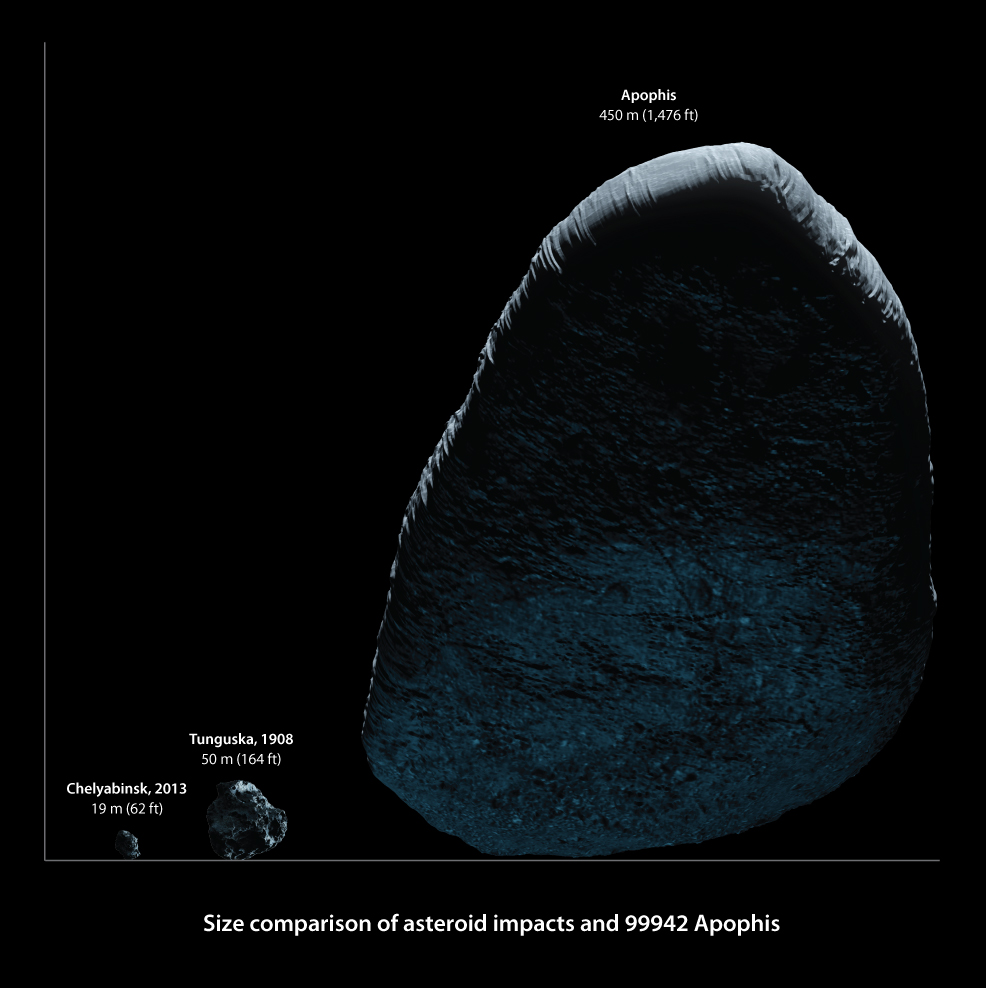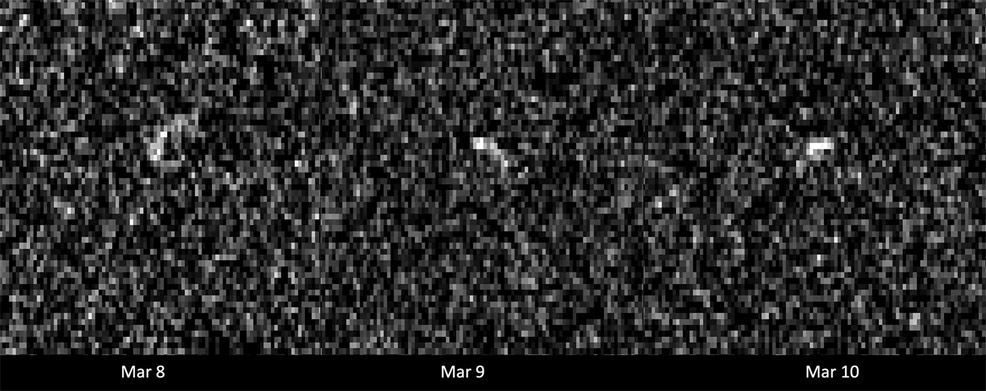
30th March 2021 Asteroid collision ruled out for 100+ years A collision between Earth and the asteroid 99942 Apophis can be ruled out, for at least the next century, based on new observations by NASA.
Following its discovery in 2004, the large asteroid 99942 Apophis triggered alarm when observations of its orbital path gave a 2.7% chance of hitting Earth on 13th April 2029. During this short period of concern, Apophis set the record for the highest ever placement on the Torino hazard scale, reaching level 4 – just one level below the orange "threatening" rating. Subsequent refinement of the trajectory eliminated this possibility. However, a possibility remained that during its 2029 close encounter, Apophis would pass through a "gravitational keyhole" nudging it towards a future impact in 2036. Astronomers ruled out this second chance, following a study in 2013. The potential for yet another close approach, in the year 2068, emerged following the discovery of a new orbital characteristic in October 2020. Known as the Yarkovsky effect, caused by heat energy from sunlight reradiated from an asteroid's surface, this had been gently and incrementally shifting the orbit of Apophis by 170 metres each year, significant enough to keep an impact scenario in play. An object the size of Apophis – and moving at 30.7 km/s, or 68,700 miles per hour (mph) – would have kinetic energy equivalent to 1,200 megatons of TNT, devastating thousands of square kilometres. For comparison, the impact would be 120 times greater than that which produced Meteor Crater in Arizona and over 20 times greater than the Tsar Bomba of 1961, the most powerful nuclear weapon ever tested.
However, astronomers have now revealed that the asteroid no longer poses a risk in 2029, 2036, or 2068 – and is unlikely to pose any danger for at least the next hundred years. Consequently, they have removed Apophis completely from the impact risk list. To arrive at this conclusion, a team used the 70 metre radio antenna at the Goldstone Deep Space Communications Complex in the Mojave Desert near Barstow, California, to precisely track Apophis' motion. They also worked in a collaboration with the 100 metre Green Bank Telescope in West Virginia to obtain better imaging of Apophis. Goldstone was transmitting while Green Bank was receiving – a "bistatic" experiment that doubled the strength of the received signal. Although pixelated, the resulting images have a resolution of 38.75 metres (127 ft) per pixel, "which is a remarkable resolution, considering that the asteroid was 17 million kilometres away, or about 44 times the Earth-Moon distance," according to scientist Marina Brozovic, who led the radar campaign. "If we had binoculars as powerful as this radar, we would be able to sit in Los Angeles and read a dinner menu at a restaurant in New York." "A 2068 impact is not in the realm of possibility anymore, and our calculations don't show any impact risk for at least the next 100 years," said Davide Farnocchia of NASA's Center for Near-Earth Object Studies (CNEOS), which is managed by NASA's Jet Propulsion Laboratory in Southern California. "With the support of recent optical observations and additional radar observations, the uncertainty in Apophis' orbit has collapsed from hundreds of kilometres to just a handful of kilometres when projected to 2029. This greatly improved knowledge of its position in 2029 provides more certainty of its future motion, so we can now remove Apophis from the risk list." "When I started working with asteroids after college, Apophis was the poster child for hazardous asteroids," said Farnocchia. "There's a certain sense of satisfaction to see it removed from the risk list, and we're looking forward to the science we might uncover during its close approach in 2029."
Comments »
If you enjoyed this article, please consider sharing it:
|








